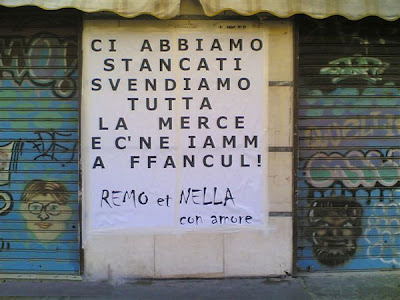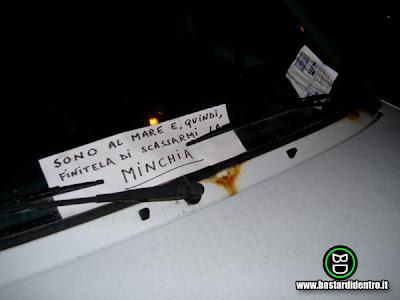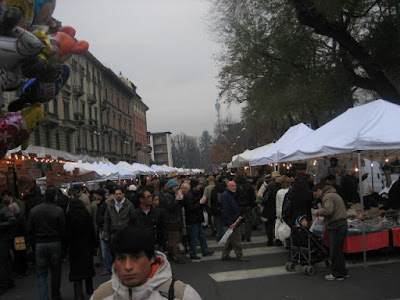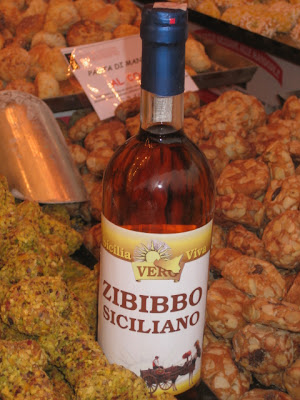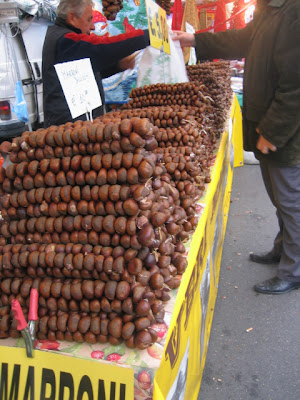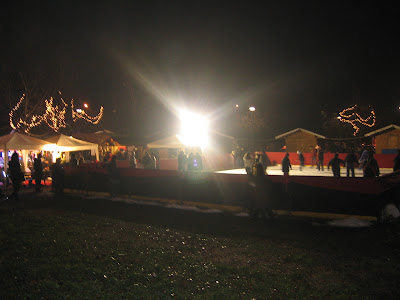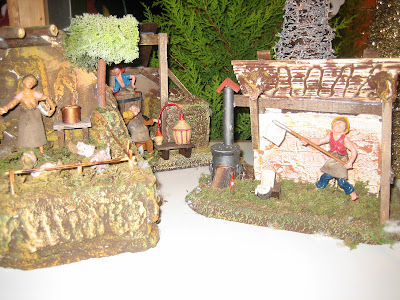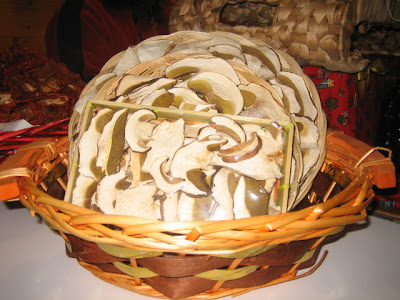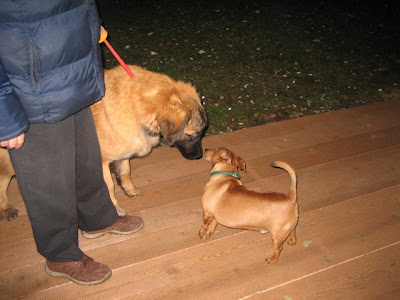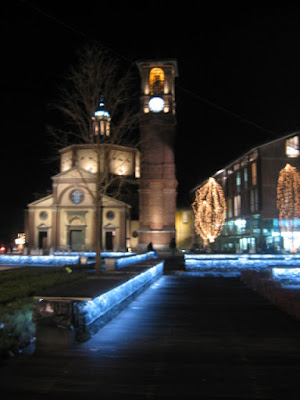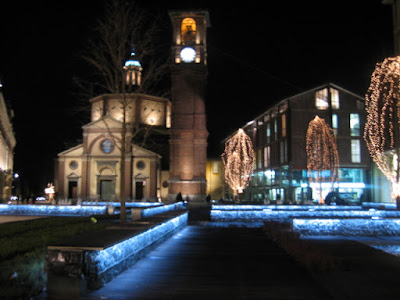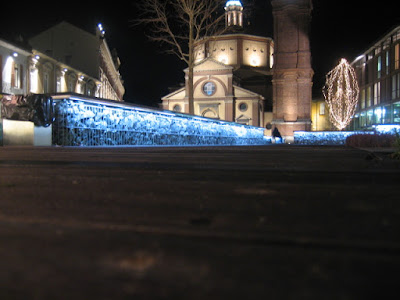A Brief History of Christmas...
A Brief History of Christmas
By JOHN STEELE GORDON
December 21, 2007
http://online.wsj.com/article/SB119820996084944523-email.html
Christmas famously "comes but once a year." In fact, however, it comes twice. The Christmas of the Nativity, the manger and Christ child, the wise men and the star of Bethlehem, "Silent Night" and "Hark the Herald Angels Sing" is one holiday. The Christmas of parties, Santa Claus, evergreens, presents, "Rudolph the Red-Nosed Reindeer" and "Jingle Bells" is quite another.
But because both celebrations fall on Dec. 25, the two are constantly confused. Religious Christians condemn taking "the Christ out of Christmas," while First Amendment absolutists see a threat to the separation of church and state in every poinsettia on public property and school dramatization of "A Christmas Carol."
A little history can clear things up.
The Christmas of parties and presents is far older than the Nativity. Most ancient cultures celebrated the winter solstice, when the sun reaches its lowest point and begins to climb once more in the sky. In ancient Rome, this festival was called the Saturnalia and ran from Dec. 17 to Dec. 24. During that week, no work was done, and the time was spent in parties, games, gift giving and decorating the houses with evergreens. (Sound familiar?) It was, needless to say, a very popular holiday.
[Illo]
In its earliest days, Christianity did not celebrate the Nativity at all. Only two of the four Gospels even mention it. Instead, the Church calendar was centered on Easter, still by far the most important day in the Christian year. The Last Supper was a Seder, celebrating Passover, which falls on the day of the full moon in the first month of spring in the Hebrew calendar. So in A.D. 325, the Council of Nicea decided that Easter should fall on the Sunday following the first full moon of spring. That's why Easter and its associated days, such as Ash Wednesday and Good Friday, are "moveable feasts," moving about the calendar at the whim of the moon.
It is a mark of how late Christmas came to the Christian calendar that it is not a moveable feast, but a fixed one, determined by the solar calendar established by Julius Caesar and still in use today (although slightly tweaked in the 16th century).
By the time of the Council of Nicea, the Christian Church was making converts by the thousands and, in hopes of still more converts, in 354 Pope Liberius decided to add the Nativity to the church calendar. He also decided to celebrate it on Dec. 25. It was, frankly, a marketing ploy with a little political savvy thrown in.
History does not tell us exactly when in the year Christ was born, but according to the Gospel of St. Luke, "shepherds were abiding in the field and keeping watch over their flocks by night." This would imply a date in the spring or summer when the flocks were up in the hills and needed to be guarded. In winter they were kept safely in corrals.
So Dec. 25 must have been chosen for other reasons. It is hard to escape the idea that by making Christmas fall immediately after the Saturnalia, the Pope invited converts to still enjoy the fun and games of the ancient holiday and just call it Christmas. Also, Dec. 25 was the day of the sun god, Sol Invictus, associated with the emperor. By using that date, the church tied itself to the imperial system.
By the high Middle Ages, Christmas was a rowdy, bawdy time, often inside the church as well as outside it. In France, many parishes celebrated the Feast of the Ass, supposedly honoring the donkey that had brought Mary to Bethlehem. Donkeys were brought into the church and the mass ended with priests and parishioners alike making donkey noises. In the so-called Feast of Fools, the lower clergy would elect a "bishop of fools" to temporarily run the diocese and make fun of church ceremonial and discipline. With this sort of thing going on inside the church to celebrate the Nativity, one can easily imagine the drunken and sexual revelries going on outside it to celebrate what was in all but name the Saturnalia.
With the Reformation, Protestants tried to rid the church of practices unknown in its earliest days and get back to Christian roots. Most Protestant sects abolished priestly celibacy (and often the priesthood itself), the cult of the Virgin Mary, relics, confession and . . . Christmas.
In the English-speaking world, Christmas was abolished in Scotland in 1563 and in England after the Puritans took power in the 1640s. It returned with the Restoration in 1660, but the celebrations never regained their medieval and Elizabethan abandon.
There was still no Christmas in Puritan New England, where Dec. 25 was just another working day. In the South, where the Church of England predominated, Christmas was celebrated as in England. In the middle colonies, matters were mixed. In polyglot New York, the Dutch Reformed Church did not celebrate Christmas. The Anglicans and Catholics did.
It was New York and its early 19th century literary establishment that created the modern American form of the old Saturnalia. It was a much more family -- and especially child -- centered holiday than the community-wide celebrations of earlier times.
St. Nicolas is the patron saint of New York (the first church built in the city was named for him), and Washington Irving wrote in his "Diedrich Knickerbocker's History of New York" how Sinterklaes, soon anglicized to Santa Claus, rode through the sky in a horse and wagon and went down chimneys to deliver presents to children.
The writer George Pintard added the idea that only good children got presents, and a book dating to 1821 changed the horse and wagon to reindeer and sleigh. Clement Clarke Moore in 1823 made the number of reindeer eight and gave them their names. Moore's famous poem, "A Visit from St. Nicholas," is entirely secular. It is about "visions of sugar plums" with nary a wise man or a Christ child in sight. In 1828, the American Ambassador Joel Roberts Poinsett, brought the poinsettia back from Mexico. It became associated with Christmas because that's the time of year when it blooms.
In the 1840s, Dickens wrote "A Christmas Carol," which does not even mention the religious holiday (the word church appears in the story just twice, in passing, the word Nativity never). Prince Albert introduced the German custom of the Christmas tree to the English-speaking world.
In the 1860s, the great American cartoonist Thomas Nast set the modern image of Santa Claus as a jolly, bearded fat man in a fur-trimmed cap. (The color red became standard only in the 20th century, thanks to Coca-Cola ads showing Santa Claus that way.)
Merchants began to emphasize Christmas, decorating stores and pushing the idea of Christmas presents for reasons having nothing whatever to do with religion, except, perhaps, the worship of mammon.
With the increased mobility provided by railroads and increasing immigration from Europe, people who celebrated Christmas began settling near those who did not. It was not long before the children of the latter began putting pressure on their parents to celebrate Christmas as well. "The O'Reilly kids down the street are getting presents, why aren't we?!" is not an argument parents have much defense against.
By the middle of the 19th century, most Protestant churches were, once again, celebrating Christmas as a religious holiday. The reason, again, had more to do with marketing than theology: They were afraid of losing congregants to other Christmas-celebrating denominations.
In 1870, President Ulysses S. Grant signed into law a bill making the secular Christmas a civil holiday because its celebration had become universal in this country. It is now celebrated in countries all over the world, including many where Christians are few, such as Japan.
So for those worried about the First Amendment, there's a very easy way to distinguish between the two Christmases. If it isn't mentioned in the Gospels of Luke and Mark, then it is not part of the Christian holiday. Or we could just change the name of the secular holiday back to what it was 2000 years ago.
Merry Saturnalia, everyone!
Mr. Gordon is the author of "An Empire of Wealth: The Epic History of American Economic Power" (HarperCollins, 2004).

